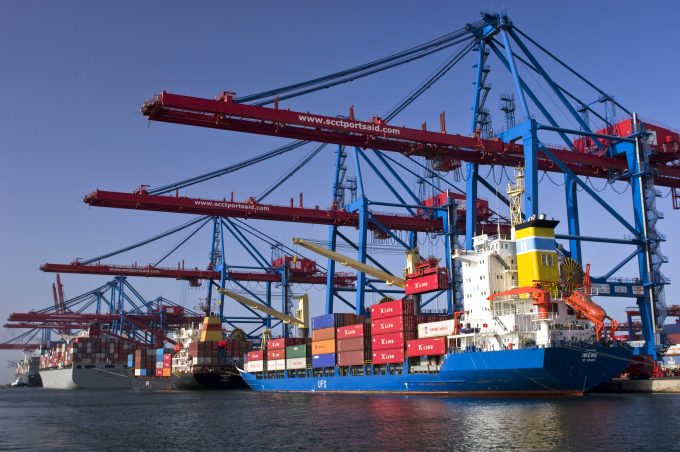Rates still slipping as peak season recedes and port strike threat subsides
Freight rates are continuing their downward correction following the premature peak season and front-loading of ...
GM: RAISING THE ROOF GGM: IN FULL THROTTLE GZIM: MAERSK BOOST KNIN: READ-ACROSSMAERSK: NOT ENOUGHMAERSK: GUIDANCE UPGRADEZIM: ROLLERCOASTERCAT: HEAVY DUTYMAERSK: CATCHING UP PG: DESTOCKING PATTERNSPG: HEALTH CHECKWTC: THE FALLGXO: DEFENSIVE FWRD: RALLYING ON TAKEOVER TALKODFL: STEADY YIELDVW: NEW MODEL NEEDEDWTC: TAKING PROFIT
GM: RAISING THE ROOF GGM: IN FULL THROTTLE GZIM: MAERSK BOOST KNIN: READ-ACROSSMAERSK: NOT ENOUGHMAERSK: GUIDANCE UPGRADEZIM: ROLLERCOASTERCAT: HEAVY DUTYMAERSK: CATCHING UP PG: DESTOCKING PATTERNSPG: HEALTH CHECKWTC: THE FALLGXO: DEFENSIVE FWRD: RALLYING ON TAKEOVER TALKODFL: STEADY YIELDVW: NEW MODEL NEEDEDWTC: TAKING PROFIT

By next month capacity on the Asia to Mediterranean trade will have increased by almost 20% year-on-year, according to new research from Drewry, as ocean carriers ramp up the cascade of redundant tonnage from North Europe loops.
But rates on the route are under pressure. At currently around $800 per teu, container spot rates are some 5% below the level of a year ago, with weak demand post-Chinese New Year expected to soften pricing even further.
“There is unlikely to be any let up in the ship upgrading process this year as newbuild deliveries for the Asia-North Europe trade will displace existing tonnage into new territories, with Asia-Med being a leading recipient,” said Drewry.
Indeed, with ultra-large ships of 18,000 teu or over – which are only economically viable on the Asia-North Europe tradelane – making up almost half of the orderbook, in terms of total capacity, Mediterranean shippers can expect to see a rapid increase in the ‘new normal’ size of vessel deployed on the route.
In fact, the 2M alliance are already deploying ships of this size on the trade, including Maersk Line’s flagship for many years – the 15,500 teu Emma Maersk. The other two alliances are following suite with similar upgrades as a consequence of the cascade from North Europe.
The Danish carrier also revealed in its 2017 annual report that it was exercising an option for the construction of two additional H-class 15,200 teu vessels, from an order placed in 2015 for nine ships of this size, with delivery stemmed for the end of next year.
It is anticipated that the newbuild ships will also be deployed between Asia and the Mediterranean.
Meanwhile, Drewry said headhaul Asia-Mediterranean traffic had finished 2017 “with a bit of a whimper” following “bumper growth in the second and third quarters”.
Noting the latest data from Container Trade Statistics (CTS), Drewry said trade to West Med ports “went into reverse” in the fourth quarter, slumping by 3.4% and representing the first downturn in nine quarters.
However, it said that Asian exports to destinations in the East Med had actually increased by 5% in the fourth quarter, albeit at a level around half of the growth achieved in the second and thrid quarters.
CTS provisional data suggested that there was a 4.4% increase in Asia-Mediterranean volumes last year, compared to 2016, to 5.5m teu.
The East Med trade countries contributing the most to the growth last year were Turkey and the Ukraine, along with Slovenia, said Drewry, which in the case of the first two nations resulted from “the (relative) stabilisation on the political and social fronts”.
It added: “Should conditions improve further there is every reason to expect further gains in container traffic, although it is unlikely to be at the same breakneck pace seen last year.”
And in regard to Egypt, Drewry said that there are “signs that the worst is over” with foreign reserves and consumer consumption both rising.
“Despite a general softening in Asia to Mediterranean trade at the end of 2017, we remain confident that this will be one of the better performers in 2018 thanks to improving conditions in major importing countries such as Turkey, the Ukraine and Egypt,” said Drewry.
Comment on this article